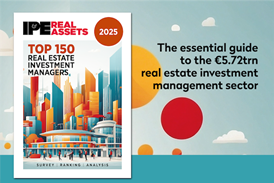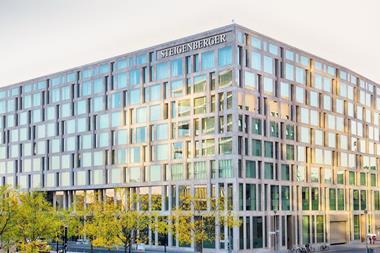With the so-called 'Generation Rent' changing the face of the UK rental market, residential property landlord Grainger is repositioning its portfolio to take advantage of the latest boom.
With the so-called 'Generation Rent' changing the face of the UK rental market, residential property landlord Grainger is repositioning its portfolio to take advantage of the latest boom.
Due to sharply rising house prices in recent years, coupled with stagnant wages, more and more London residents are being forced to rent for longer, thereby indefinitely postponing the idea of buying their own home. Subsequently, London's rental market has grown more rapidly than in any other part of the country.
According to agency Knight Frank, around 25% of people in the capital rent, up from around 17% in 2001 and just 14% in 1991. This compares with a rate of around 15% today in other parts of the country, such as in the north-east and in the Midlands, according to Knight Frank.
As a result, Grainger has repositioned its portfolio in the UK to take advantage of the changing landscape, London-based Laure Duhot, director of strategic capital markets at Grainger, told PropertyEU. The group is now focusing more on its long-term hold market rent portfolio than its regulated tenancy property portfolio.
Regulated tenancy assets are a legacy of the past and refer to housing stock with old-fashioned rent-control leases in place. They still account for a large part of Grainger’s UK portfolio, although there are fewer acquisition opportunities and this is a finite and dwindling housing stock.
‘Our aim is to develop units that we can then hold for the long-term. We are also focusing more heavily on London and the south-east than on other regions, as there can be regional weaknesses,’ she told PropertyEU.
In the UK, Grainger is generally driven by opportunities in London and the south-east, due to strong economic fundamentals and demand/supply imbalances which have led to sustained rental growth and which is also driving investor interest, Duhot said. ‘There is a real demand for good quality stock to rent. Ideally, we would acquire unbroken blocks of 100 units but that can be difficult to find. However, we do prefer to buy blocks because of economies of scale.’
Earlier in January, unit holders in Grainger’s GRES, a UK market-rented residential property fund, sold Dutch pension fund APG Strategic Real Estate Pool (APG) a 73% stake for £158 mln (€182 mln) to enable Grainger to continue to de-leverage debt through co-ownership structures.
The new joint venture unit trust - known as GRIP - will focus on acquiring residential assets in the Greater London area, Duhot told PropertyEU. Grainger holds a 26.2% stake and will co-invest £59 mln. The new set-up will allow Grainger to liquidate the fund, following a shareholder mandate voting in June last year.
n addition to the UK, Grainger is active in Germany. The company had £2 2.bn of AUM as of end-September 2012, of which around 84% (by value) is in the UK and 16% in Germany. However, in terms of the number of units, around 62% is in the UK, with 38% in Germany.
‘We don’t have a set allocation in terms of how much we want to invest in these two markets this year,' Duhot said. ‘However, with our partners, we have invested over £500 mln into residential assets since November 2012. We are very interested in partnerships with other investors as a means to boost our income stream and to take our own equity one step further. Residential is a core, steady asset class. Yields are also stable at around 4% to 5% in the UK and around 6% to 7% in Germany. By teaming up with other investors, we can do more.’
One such partner is real estate investment group Heitman, who Grainger teamed up with in November last year to create a joint venture in which it holds a 25% stake equating to about €20 mln. ‘Together, we are now acquiring residential assets in major markets in Germany, focusing on the most affluent states, such as Hesse, Baden Wurttemberg and Bavaria, just to get critical mass,’ Duhot explained, noting that Grainger is mulling further joint ventures with Heitman.
Grainger has been active in the German market for seven years and Duhot notes that it a very different market to the UK. ‘For example, it is much more socially acceptable to rent in Germany than in the UK,’ she said.
Nonetheless, there are challenges, Duhot notes, with some investors facing a sharp learning curve when it comes to residential assets as they can find it harder to accept lower yields. ‘It’s a trickier asset class for institutional investors due to the leakage between gross-to-net rents, which doesn’t exist in the commercial sector. The main challenge, though, is critical mass and being able to find enough good product,’ Duhot said.
Grainger has a big development programme of more than 7,000 new units, spread over a number of years. Its aim is to limit developments to a maximum of 10% of its total assets, Duhot said. ‘Acquisitions are more opportunity-driven: we are always in the market buying small assets but large portfolio transactions are less predictable: one year (such as in 2011), we may get involved in several large portfolios transactions and see fewer opportunities coming to the market the following year,’ Duhot added.










